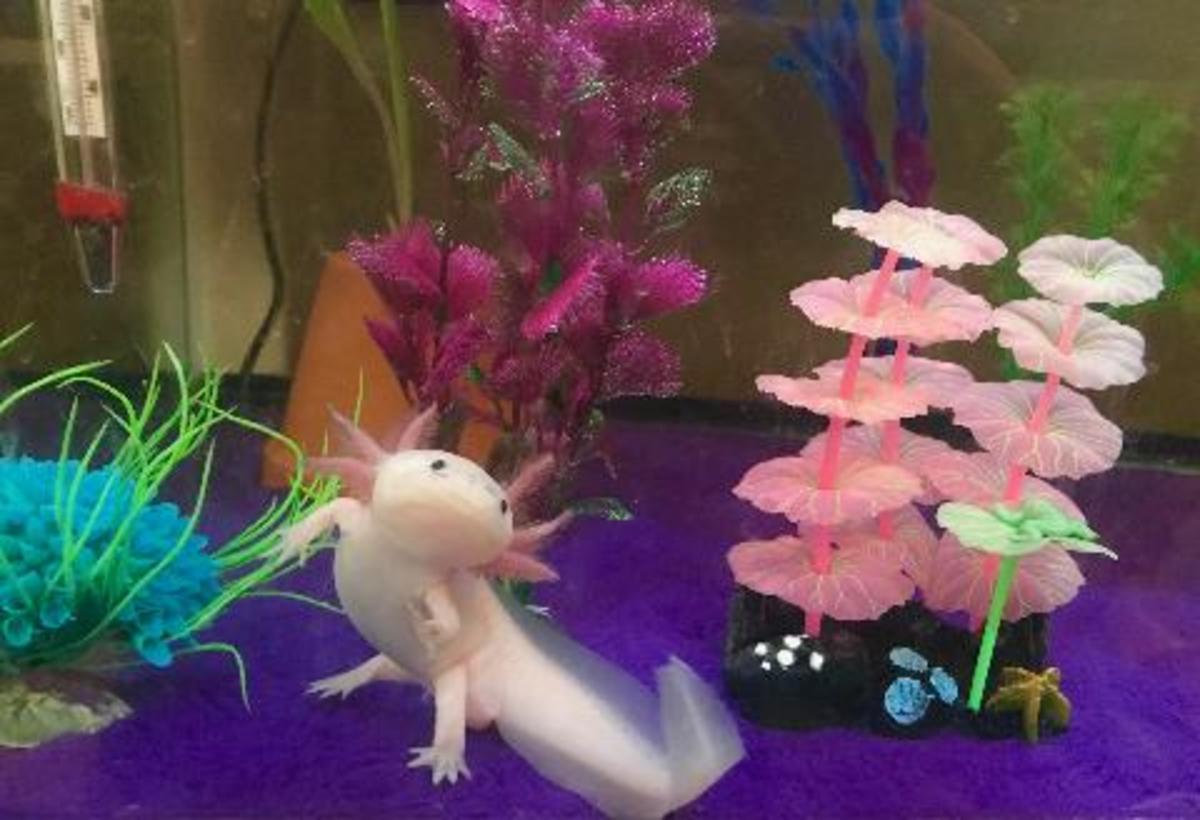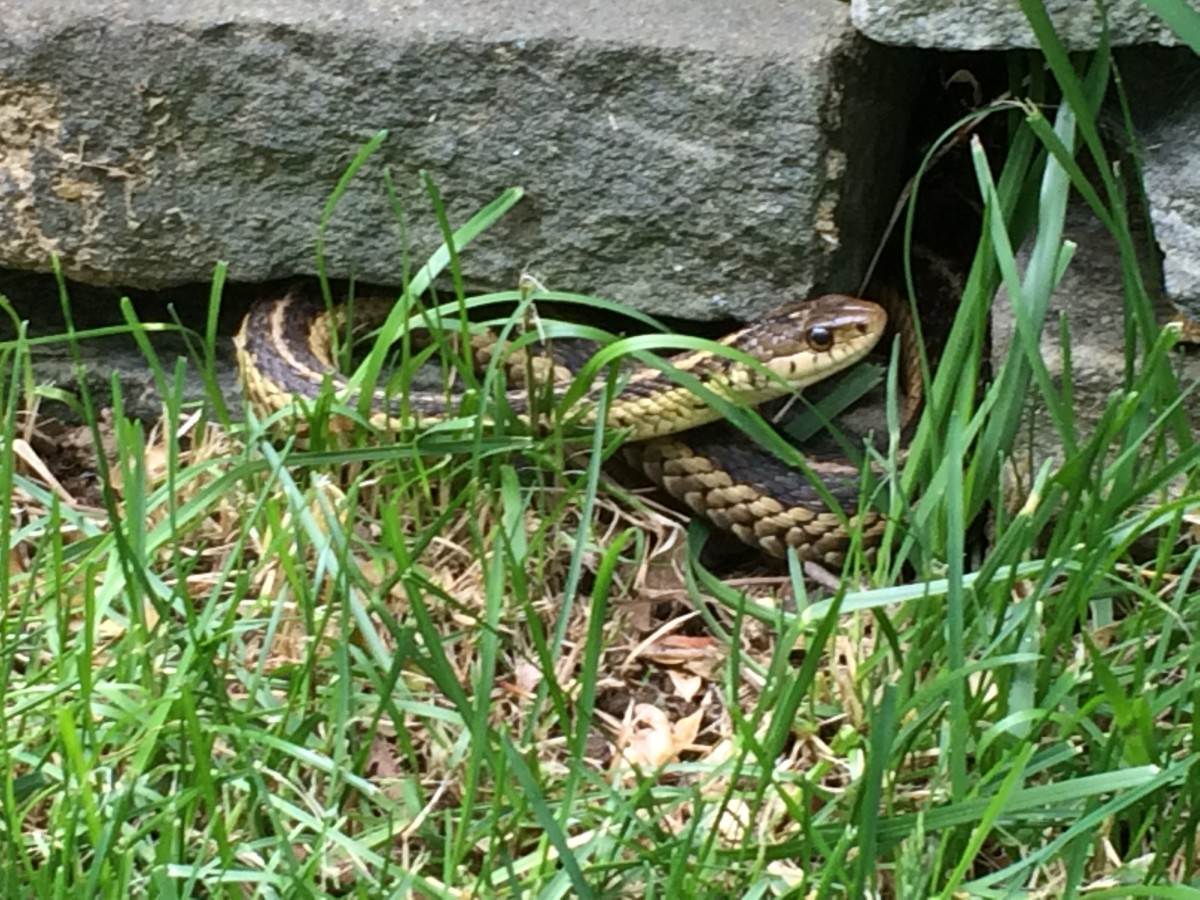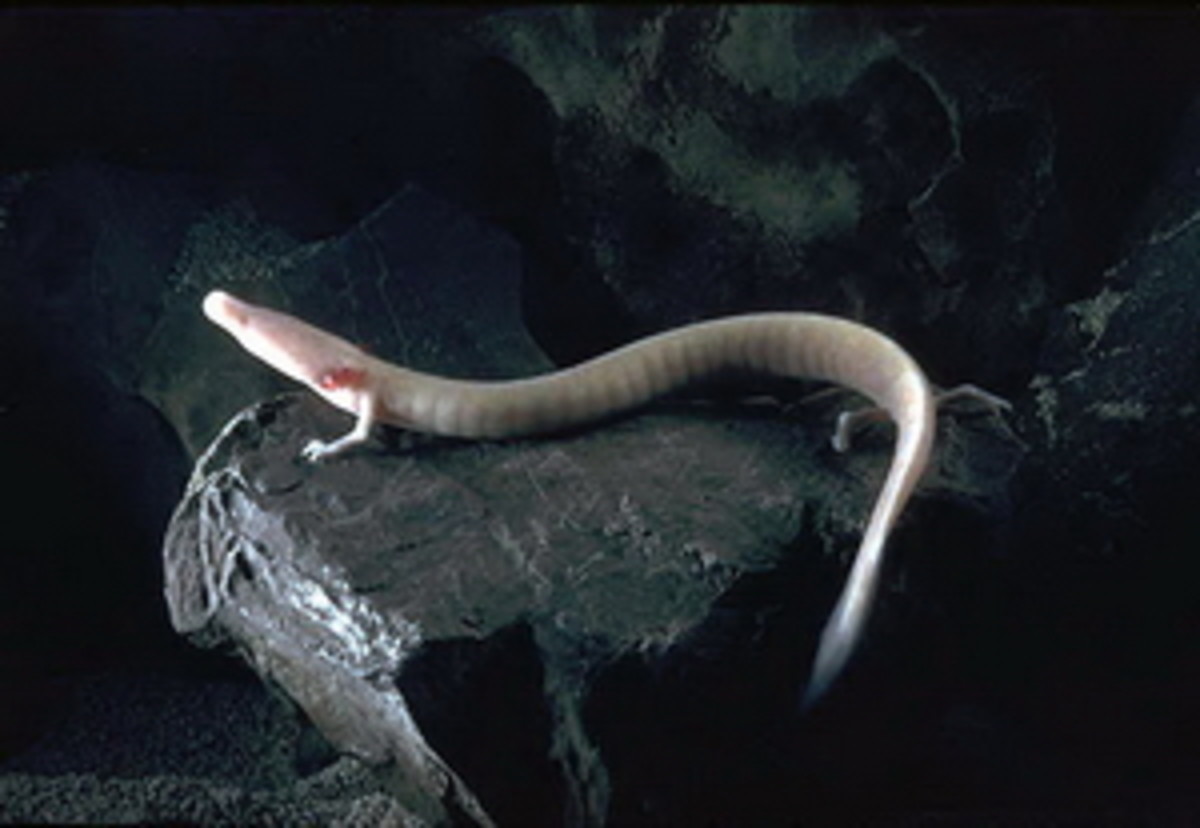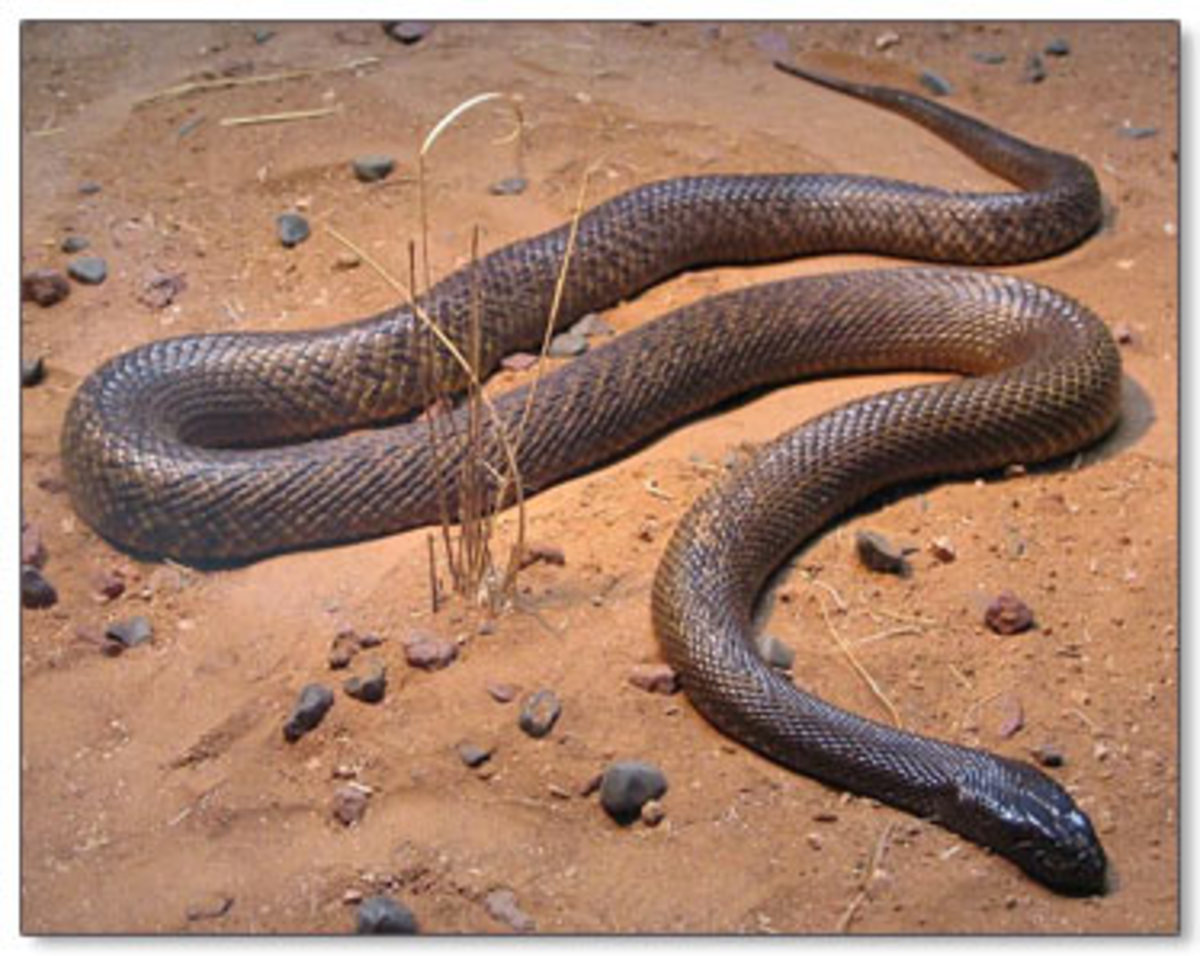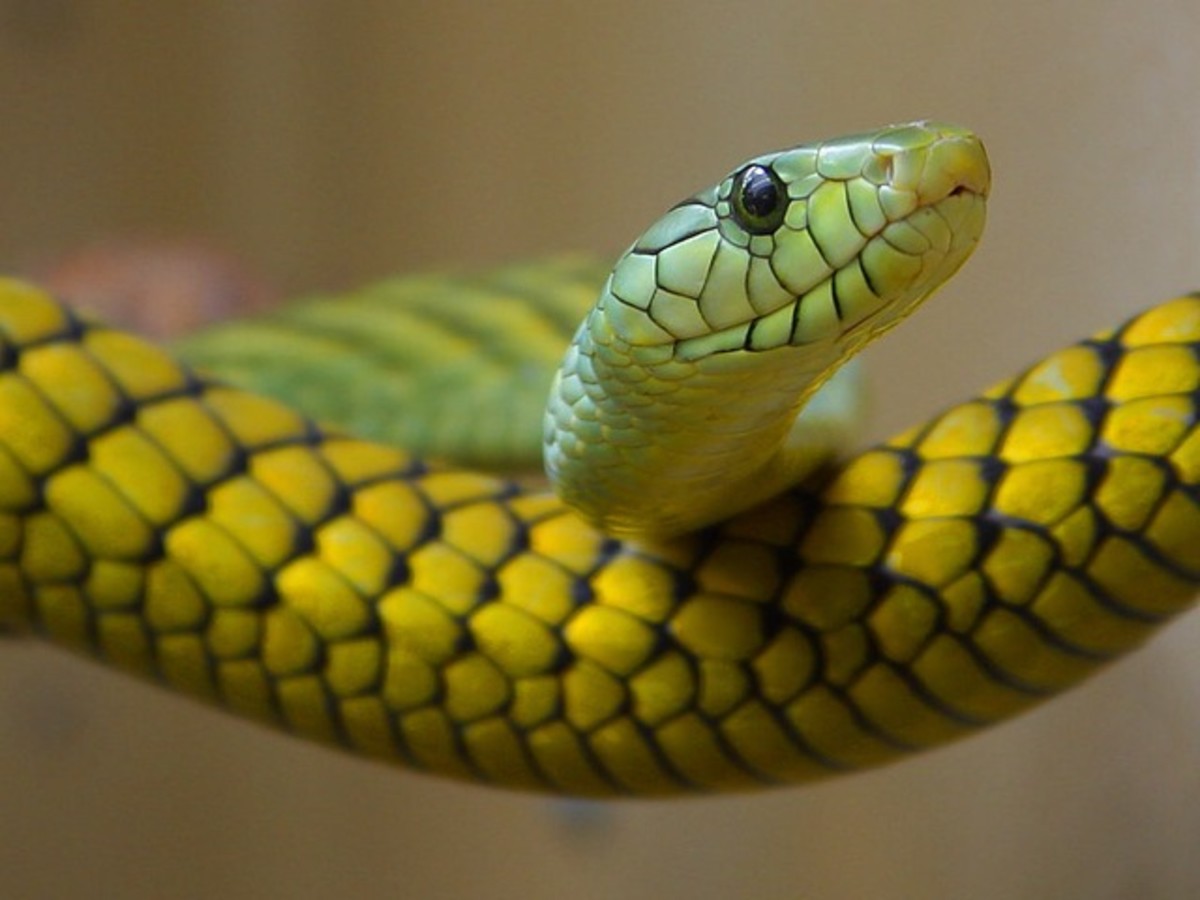Axolotls, Newts, And Salamanders
Alike But So Different
Certainly a bow and some applause must be given to the relatives of frogs and toads who are the salamanders, newts, axolotis, and their allies. Generally, they follow the system of the typical frogs in their breeding habits, but there are important exceptions.
Salamanders, newts, and their allies differ from frogs and toads in that most species have four limbs and full tails.
At first sight a salamander might pass for a lizard, which it closely resembles in appearance and movement, though it is less agile.
Salamanders may, however, be distinguished by their smooth damp skin. Most species are born in or near water. Although with some, as for example, the Spotted salamander -- the mother does not always deposit them but keeps them in her body until they hatch.
Even so, the young are tadpoles. They must go through their early career was water-breathers. Such a salamander may produce as many as thirty eggs or young at a time.

Red-backed Salamander
Our common red-backed salamander lays its eggs on land. The young pass their entire larval life within the egg capsules, as in the case of certain frogs. Flip them over and they will have a black and white belly.
They don't have lungs, but breathe through their skin. This means they require being moist at all times, which is why you are most likely to see them on a rainy evening hunting for food.
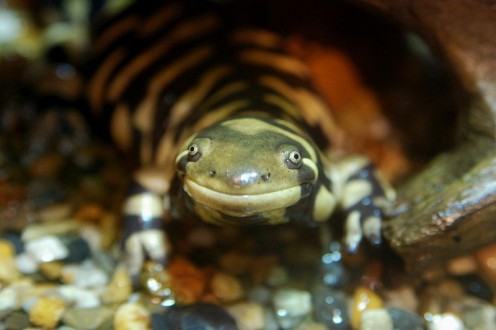
Alpine Salamanders
The Alpine species is another that has learned to dispense with a pool for its cradle. The cradle is within the mother's own body.
The adults frequent streams and moist woods high up in the mountains, but the eggs are not laid in such places.
Of the fifty which are retained in the mother's body only two come to life. Two perfect small Alpine salamanders come out ready to breathe air at once, and to go about their business snapping up beetles and what not.
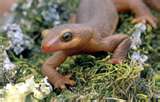
Newts
Newts on the other hand, are much more fond of water. Their ability to make the best of two worlds has resulted in their spreading over a much wider surface of the earth than is the case with the salamanders.
Practically everybody who spends a lot of time outdoors, knows the newt, for there is hardly a pond or ditch without these agile creatures.
Their tadpole stage is in the water, but afterward some come ashore, hide among green moisture, and only return to their pond as adults to lay their eggs.
In most respects newts are alike in habit. Their eggs are attached singly to water plants, the leaves being folded altogether by the hind legs of the mother and held in position by the stickiness of the egg. All are carnivorous, and eat tiny worms, small slugs, and other enemies of our crops.
Spectacled Newts and Salamanders
The Spectacle newt, so called from the curious appearance of its head and eyes, is found in Italy and Sardinia.
There is also a Spectacled salamander who is quite a sight to see, with Dalmatian-like spots, red legs and tail.
British Newt
The male British newt carries on his back a handsome fin-like crest, especially prominent in the breeding season. His female companions are less colorful. They are also the only species of newt to be found in Ireland.
Flip them over and you'll find that their bellies are yellow with black spots. They are popular and often populate small ponds.
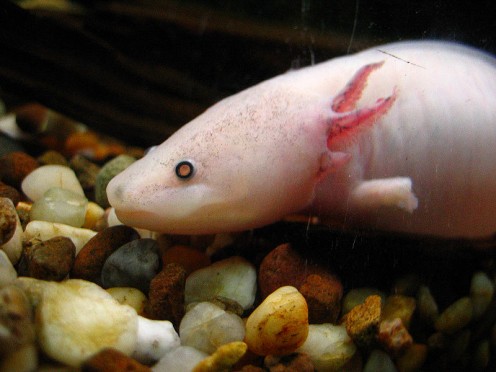
The Axolotl Has A Thyroid Condition
The clown-like in appearance Axolotal has become the most famous of the Amphibia. It is a native of Mexico and many parts of North America. They come in a large variety of colors and are hugely popular as aquarium pets.
In Mexico, in waters abundant with food, the Axolotl swims at east, a tadpole with true gills, and declines to take the plunge into maturity. It is born a tadpole, it lies as a tadpole, and it becomes the parent of other tadpole Axolotls.
It is not so elsewhere, for outside this Mexican area -- the Anxolotl changes into a well known salamander, the Ambystoma.
The Axolotl does not remain a child merely because it is too lazy to leave its childhood waters. Something has gone wrong with the mechanism that produces metamorphosis.
If this deficiency is replaced by thyroid feeding it will promptly metamorphose. The thyroid is the gland of internal secretion that produces metamorphosis.
If thyroid substances are placed in the tank with frog tadpoles, they do the same, rushing the little tadpoles in haste through its cycle and turning it into a frog -- not of normal size, but no bigger than a fly!
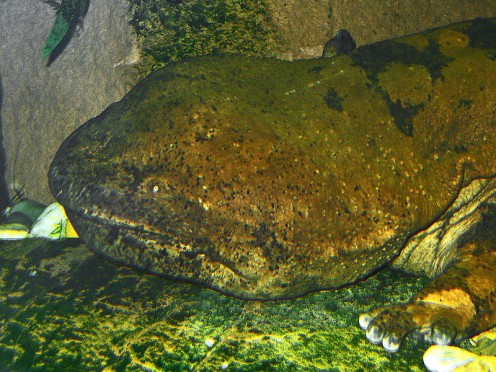
Mother Nature's Wild Imagination
There are many other interesting salamanders, some of which, dwelling in caves and deep wells, retain their gills and tadpole condition throughout life.
There is also a true giant of salamanders, native of China and Japan, nearly four feet long and heavy in build.
Another different salamander is remarkable for having but three toes to each foot. Still another in the Mississippi area of the United states, retains gills with its lungs, and apparently lives on fish as well as worms and other fresh-water life.
Giant Chinese Salamander
A Sensitive Sort of Fellow -- The Olm
A still more curious salamander is the Olm, know to science as Proteus anguinus. It is a creature of mystery, ten inches long, with the two pairs of limbs far apart, with the eyes completely covered with skin and sightless, though still sensitive to light.
Throughout life it retains its gills and remains a water-breather, deep down in the subterranean streams that course through the Alps in Carniola, Dalmatia, and Carinthia.
Only in times of flood is it washed into the light and its presence in life made known.
Once upon a time, before it took to this dismal abode of unsunned waters, the Proateus must have been a normal salamander, but all efforts to make it follow the old line of development have so far been in vain.
PBS - Alien Creature - The Olm
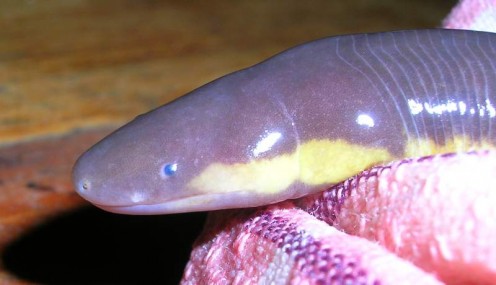
Caecilians - The Helpless and Untraveled
Yet another salamander has so far strayed from the original pattern as to have only two legs. It has gills, but also an internal breathing mechanism for the use of air.
There is something snake-like about these salamanders, but we go a step farther with the Caecilians, to find amphibians that have lost their limbs entirely, as well as their eyes.
They are worm-like in their habit of burrowing in moist soft soil. There the mother lays her eggs and coils herself around them till they hatch.
The tadpoles remain in the substance of the mass of egg till they have shed their gills, when they sally forth into the water and complete their larval growth.
A great variety of these curious creatures have spread over parts of Africa, tropical Asia and South America -- there are fourteen genera in all -- and this wide distribution of of a helpless, untraveled group has been used as evidence of the former connection of Africa and South America. That fact alone tells a tale of ancient days that still hold mysteries.




